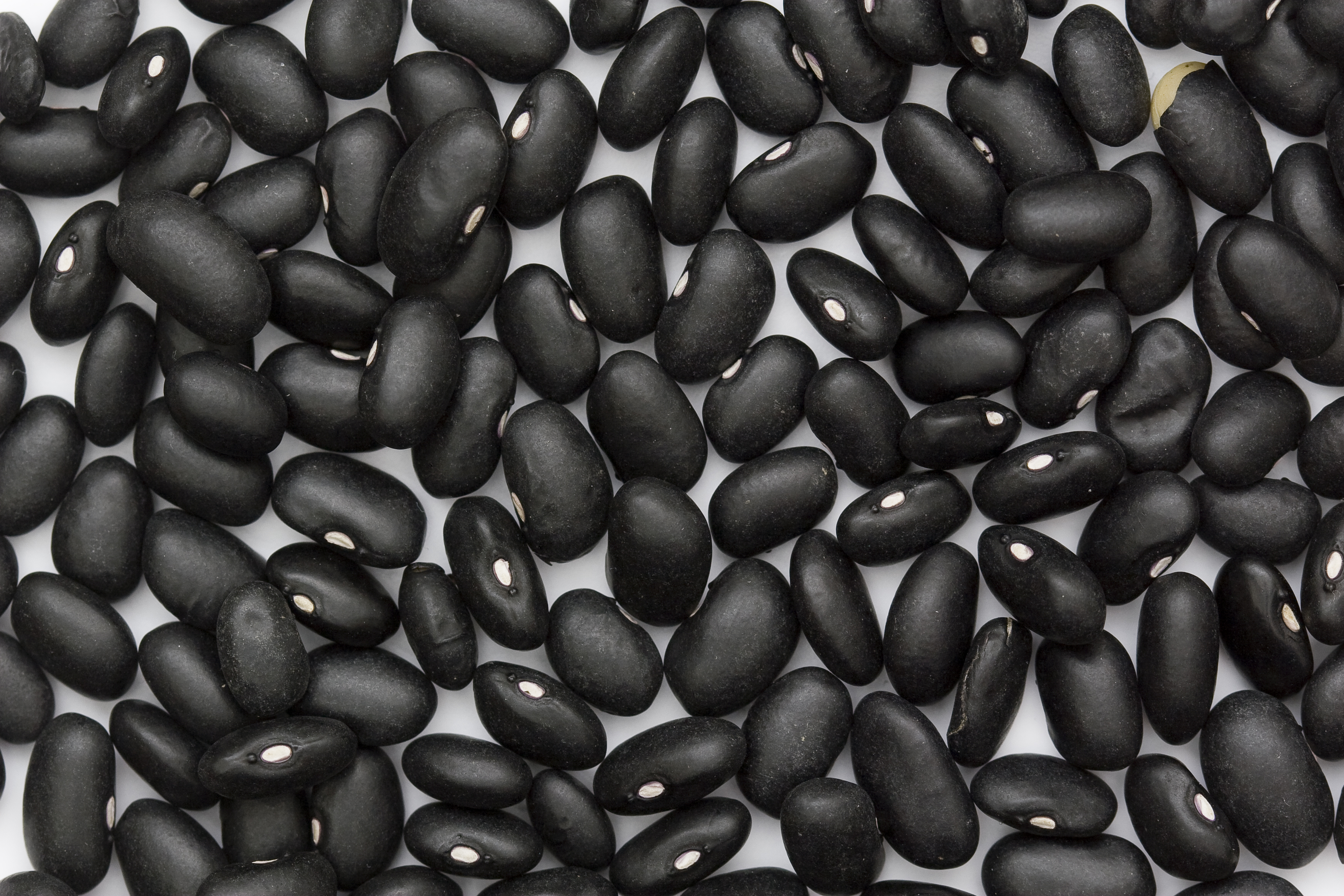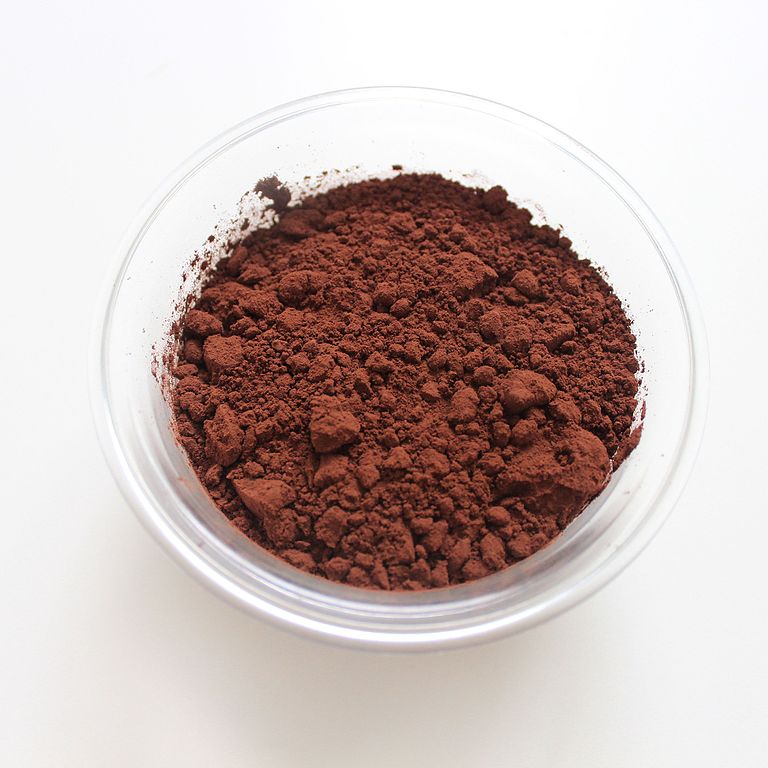Black Beans vs. Cocoa Powder
Nutrition comparison of Black Beans and Cocoa Powder
Ever wonder how your favorite foods stack up against each other in terms of nutrition?
We compared the nutritional contents of
black beans
versus
cocoa powder
(100g each)
below using 2020 USDA and NIH data[1].
For a quick recap of significant nutrients and differences in black beans and cocoa powder:
- Both cocoa powder and black beans are high in dietary fiber and potassium.
- Cocoa powder has more niacin and Vitamin B6.
- Cocoa powder is an excellent source of calcium, iron and protein.
USDA sources for nutritional information: Black Beans (Beans, black turtle, mature seeds, canned) and Cocoa Powder (Cocoa, dry powder, unsweetened) . Have a correction or suggestions? Shoot us an email.
Calories and Carbs
calories
Cocoa powder is high in calories and black bean has 60% less calories than cocoa powder - cocoa powder has 228 calories per 100 grams and black bean has 91 calories.
For macronutrient ratios, black beans is heavier in protein, heavier in carbs and much lighter in fat compared to cocoa powder per calorie. Black beans has a macronutrient ratio of 26:71:3 and for cocoa powder, 18:54:29 for protein, carbohydrates and fat from calories.
Macro Ratios from Calories:
| Black Beans | Cocoa Powder | |
|---|---|---|
| Protein | 26% | 18% |
| Carbohydrates | 71% | 54% |
| Fat | 3% | 29% |
| Alcohol | ~ | ~ |
carbohydrates
Cocoa powder is high in carbohydrates and black bean has 71% less carbohydrates than cocoa powder - cocoa powder has 57.9g of total carbs per 100 grams and black bean has 16.6g of carbohydrates.
dietary fiber
Both cocoa powder and black beans are high in dietary fiber. Cocoa powder has 436% more dietary fiber than black bean - cocoa powder has 37g of dietary fiber per 100 grams and black bean has 6.9g of dietary fiber.
sugar
Cocoa powder and black beans contain similar amounts of sugar - cocoa powder has 1.8g of sugar per 100 grams and black bean has 0.23g of sugar.
Protein
protein
Cocoa powder is an excellent source of protein and it has 225% more protein than black bean - cocoa powder has 19.6g of protein per 100 grams and black bean has 6g of protein.
Fat
saturated fat
Cocoa powder is high in saturated fat and black bean has 99% less saturated fat than cocoa powder - cocoa powder has 8.1g of saturated fat per 100 grams and black bean has 0.08g of saturated fat.
Vitamins
Vitamin C
Black bean has more Vitamin C than cocoa powder - black bean has 2.7mg of Vitamin C per 100 grams and cocoa powder does not contain significant amounts.
Vitamin A
Black beans and cocoa powder contain similar amounts of Vitamin A - black bean has 1.2ug of Vitamin A per 100 grams and cocoa powder does not contain significant amounts.
Vitamin E
Cocoa powder and black beans contain similar amounts of Vitamin E - cocoa powder has 0.1mg of Vitamin E per 100 grams and black bean has 0.62mg of Vitamin E.
Vitamin K
Cocoa powder and black beans contain similar amounts of Vitamin K - cocoa powder has 2.5ug of Vitamin K per 100 grams and black bean has 2.3ug of Vitamin K.
The B Vitamins
Cocoa powder has more niacin and Vitamin B6. Both black beans and cocoa powder contain significant amounts of thiamin, riboflavin, pantothenic acid and folate.
| Black Beans | Cocoa Powder | |
|---|---|---|
| Thiamin | 0.14 MG | 0.078 MG |
| Riboflavin | 0.12 MG | 0.241 MG |
| Niacin | 0.62 MG | 2.185 MG |
| Pantothenic acid | 0.184 MG | 0.254 MG |
| Vitamin B6 | 0.055 MG | 0.118 MG |
| Folate | 61 UG | 32 UG |
Minerals
calcium
Cocoa powder is an excellent source of calcium and it has 266% more calcium than black bean - cocoa powder has 128mg of calcium per 100 grams and black bean has 35mg of calcium.
iron
Cocoa powder is an excellent source of iron and it has 629% more iron than black bean - cocoa powder has 13.9mg of iron per 100 grams and black bean has 1.9mg of iron.
potassium
Both cocoa powder and black beans are high in potassium. Cocoa powder has 395% more potassium than black bean - cocoa powder has 1524mg of potassium per 100 grams and black bean has 308mg of potassium.
Omega-3 and Omega-6
omega 6s
Comparing omega-6 fatty acids, cocoa powder has more linoleic acid than black bean per 100 grams.
| Black Beans | Cocoa Powder | |
|---|---|---|
| linoleic acid | 0.068 G | 0.44 G |
| Total | 0.068 G | 0.44 G |
Customize your serving size
The comparison below is by weight, but sometimes 100g isn't that intuitive of a measurement for food. View a custom portion comparison (e.g. cups, oz, package).
You can try adding or subtracting the amount of either Black Beans or Cocoa Powder .
Note: The specific food items compared are: Black Beans (Beans, black turtle, mature seeds, canned) and Cocoa Powder (Cocoa, dry powder, unsweetened) .
Black Beans g
()
|
Daily Values (%) |
Cocoa Powder g
()
|
|||||
|---|---|---|---|---|---|---|---|
| KCAL % |
|
5% | calories | 5% |
|
KCAL % | |
| G % |
|
5% | carbohydrates | 5% |
|
G % | |
| G % |
|
5% | dietary fiber | 5% |
|
G % | |
| G | 5% | sugar | 5% | G | |||
| G % |
|
5% | total fat | 5% |
|
G % | |
| G % |
|
5% | saturated fat | 5% |
|
G % | |
| G | 5% | monounsaturated fat | 5% | G | |||
| G | 5% | polyunsaturated fat | 5% | G | |||
| G | 5% | trans fat | 5% | G | |||
| MG | 5% | cholesterol | 5% | MG | |||
| MG % |
|
5% | sodium | 5% |
|
MG % | |
| 5% | Vitamins and Minerals | 5% | |||||
| UG % |
|
5% | Vitamin A | 5% |
|
UG % | |
| MG % |
|
5% | Vitamin C | 5% |
|
MG % | |
| IU % |
|
5% | Vitamin D | 5% |
|
IU % | |
| MG % |
|
5% | calcium | 5% |
|
MG % | |
| MG % |
|
5% | iron | 5% |
|
MG % | |
| MG % |
|
5% | magnesium | 5% |
|
MG % | |
| MG % |
|
5% | potassium | 5% |
|
MG % | |
| MG % |
|
5% | thiamin (Vit B1) | 5% |
|
MG % | |
| MG % |
|
5% | riboflavin (Vit B2) | 5% |
|
MG % | |
| MG % |
|
5% | niacin (Vit B3) | 5% |
|
MG % | |
| MG % |
|
5% | Vitamin B6 | 5% |
|
MG % | |
| MG % |
|
5% | pantothenic acid (Vit B5) | 5% |
|
MG % | |
| UG % |
|
5% | folate (Vit B9) | 5% |
|
UG % | |
| UG % |
|
5% | Vitamin B12 | 5% |
|
UG % | |
| MG % |
|
5% | Vitamin E | 5% |
|
MG % | |
| UG % |
|
5% | Vitamin K | 5% |
|
UG % | |
| G % |
|
5% | protein | 5% |
|
G % | |
| UG % |
|
5% | biotin (Vit B7) | 5% |
|
UG % | |
| MG % |
|
5% | choline | 5% |
|
MG % | |
| MG % |
|
5% | chlorine | 5% |
|
MG % | |
| UG % |
|
5% | chromium | 5% |
|
UG % | |
| MG % |
|
5% | copper | 5% |
|
MG % | |
| UG % |
|
5% | fluoride | 5% |
|
UG % | |
| UG % |
|
5% | iodine | 5% |
|
UG % | |
| MG % |
|
5% | manganese | 5% |
|
MG % | |
| UG % |
|
5% | molybdenum | 5% |
|
UG % | |
| MG % |
|
5% | phosphorus | 5% |
|
MG % | |
| UG % |
|
5% | selenium | 5% |
|
UG % | |
| MG % |
|
5% | zinc | 5% |
|
MG % | |
| G | 5% | Water | 5% | G | |||
| G | 5% | Starch | 5% | G | |||
| G | 5% | Alcohol | 5% | G | |||
FAQ
Does cocoa powder or black beans contain more calories in 100 grams?Cocoa powder is high in calories and black bean has 60% less calories than cocoa powder - cocoa powder has 228 calories in 100g and black bean has 91 calories.
Does cocoa powder or black beans have more carbohydrates?
By weight, cocoa powder is high in carbohydrates and black bean has 70% fewer carbohydrates than cocoa powder - cocoa powder has 57.9g of carbs for 100g and black bean has 16.6g of carbohydrates.
Does cocoa powder or black beans contain more calcium?
Cocoa powder is a rich source of calcium and it has 270% more calcium than black bean - cocoa powder has 128mg of calcium in 100 grams and black bean has 35mg of calcium.
Does cocoa powder or black beans contain more iron?
Cocoa powder is an abundant source of iron and it has 630% more iron than black bean - cocoa powder has 13.9mg of iron in 100 grams and black bean has 1.9mg of iron.
Does cocoa powder or black beans contain more potassium?
Both cocoa powder and black beans are high in potassium. Cocoa powder has 400% more potassium than black bean - cocoa powder has 1524mg of potassium in 100 grams and black bean has 308mg of potassium.

